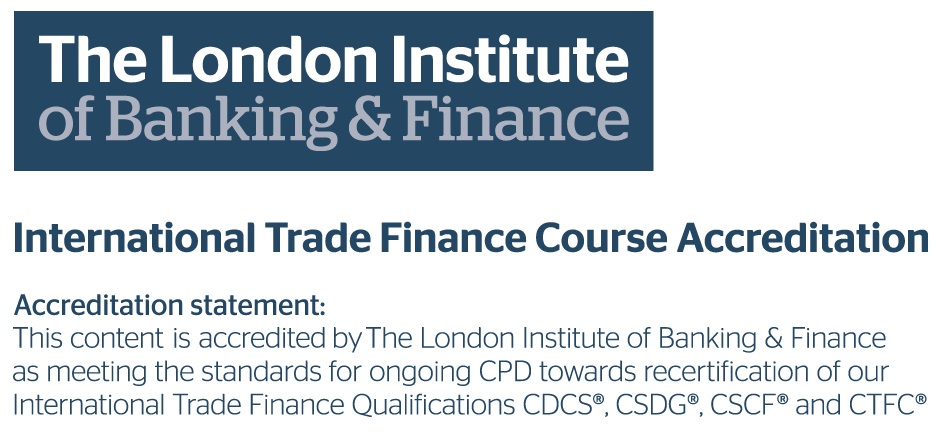This past week, Trade Finance Global (TFG) stopped by the inaugural ITFA and BCR: Trade & Investment Forum 2023 to learn more about making trade an investible asset class.
In mid-2022, ITFA released their “Whitepaper on developing a Practitioners Guide to making Trade an Investible Asset Class”. ITFA’s whitepaper discusses five key points around trade as an asset class:
- Lack of Standardisation
- Legal and Regulatory Landscape
- Lack of Market Infrastructure / Industry Standard Practices
- Speaking the Same Language
- Supporting Sustainable Trade Finance
- Reputation of the Trade Finance Asset Class
- Other Barriers to Entry
Now, ITFA and BCR have partnered to break down the confusion and misconceptions on these topics.
At the Trade & Investment Forum, Michael Bickers, managing director of BCR, and Sean Edwards, chairman of ITFA, sat down to discuss making trade an investible asset, the move to digitisation, and the legal and regulatory frameworks behind all of this.
A new asset for a new class of investors
Interest in making trade an investible asset is at an all-time high, and not just from traditional banks, funds and investors. The 2023 economic environment is becoming increasingly difficult, with rapidly rising interest rates, supply chain issues, and the collapse of we.trade, Marco Polo, and SVB.
This challenging economic period has led to a demand for new investments. As the number of new players enter the market, there needs to be a coordinated effort to educate everyone.
Edwards said, “What we find today is a lot of people who are trade curious. Some know a lot about it, some know very little. Today was about explaining what trade assets are, what the opportunities are and what needs to be done to actually make that attractive for those investors.”
Importantly, there needs to be dialogue between the traditional players in trade finance, like larger banks and corporates, and the new entries. To facilitate real progress, Edwards says that “we need to have a translator” between the two groups.
Simplification and standardisation: moving in the right direction
Trade finance tools are some of the most important and most used instruments in the world. The WTO estimates that 80% of international trade uses trade finance, and the global trade finance market is valued at $8 trillion.
However, there is still a perceived barrier to entry because of the complexity of the tools. Edwards talks about this idea, saying, “I think a lot of the investors are being put off by the apparent complexity of trade. Anybody who’s been in trade for a long time will say, well, actually, it’s really quite simple.”
Breaking down these barriers was a major reason for creating the first ITFA and BCR Trade & Investment Forum. Defining and demystifying trade finance instruments, specifically newer trade technology, is the first step to widespread use and adoption.
A uniform set of rules is also a major catalyst and the next step for further adoption. The UK is going in the right direction, as the Electronic Trade Documents Bill has passed Parliament. It is important to remember, as Edwards points out, laws don’t create markets, they simply provide a framework and enable the market to be created.
But there is progress in more widespread adoption. According to Edwards, Lloyds and Metcor are just two examples of ITFA members who are currently issuing digital negotiable instruments (DNIs) or electronic payment instruments (EPUs).
“One of the lessons we’ve seen with the current problems of digitalisation is that there is not resistance but there’s inertia to adopting digitalisation.
It’s not going to [happen] overnight. But, I’ve spoken to major banks in France, for example, they said they love these types of [digital] instruments.”
Edwards is optimistic about the changes happening in electronic trade, and believes that the ITFA guides will be instrumental in creating a more simplified understanding of these new tools.
Digital progress? Only time will tell
As the past few years have shown, the world changes rapidly, and flexibility is key. While there is no telling what state the global economy, or trade industry will be in by 2024, Edwards believes that the world will have more digital legislation and increased usage of digital tools.
Since 2019, Bahrain, Singapore and the Abu Dhabi Global Markets have adopted MLETR, and Edwards thinks that more countries will start drafting digital legislation. As the legislation becomes more permissive, more banks will start to use all of the tools available to them.
For many years, there has been endless discussion about the move to digitisation, but there finally is tangible movement in the trade finance industry.
As these tools become more popular, Edwards believes that it will create a snowball effect. Edwards said, “The technology itself is there, it exists, it’s pretty generic. And as soon as people see that market, I think we’ll get a lot more competition in the offering of the tech providers.
So I think by twelve months we’ll have got really way beyond the proof of concept. We’ll have got to real use cases and it will have got to huge scale.”




























